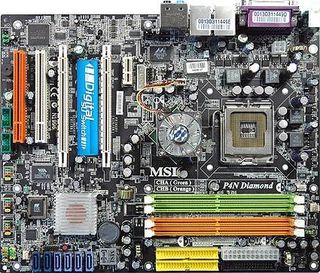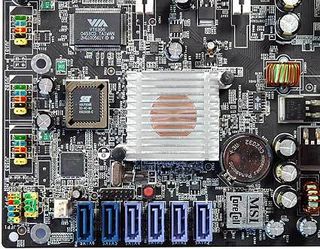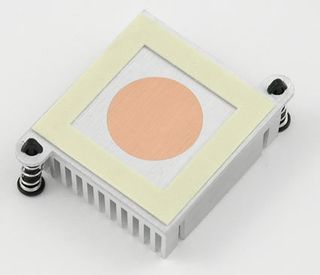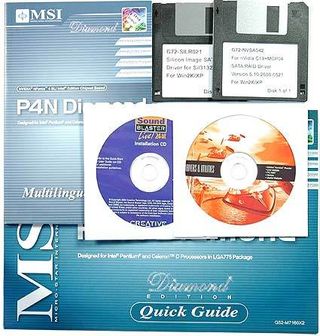Budget And Premium Motherboards At The Crossroads
Going Premium: P4N Diamond

Now let's have a look at MSI's premium Pentium motherboard product. The PCB is colored cool black, rather than flashy red, and the number of components necessitate a much larger board than the 915PL Neo-V. MSI employs NVIDIA's nForce4 Intel Edition chipset, which can be considered the state-of-the-art choice for gamers and enthusiasts. It allows you to run two x16 PCI Express graphics card (x8 mode each), either to expand your Windows desktop to as many as four displays, or to speed up suitable 3D applications in SLI mode.
There is one additional x1 PCI Express slot to take future add-on cards. Two 32-bit PCI slots are ready for operating existing devices; the orange one is a higher priority PCI slot for timing-sensitive cards.
In contrast to the 915PL Neo-V, the P4N Diamond runs dual channel DDR2 memory at speeds up to DDR2-667. NVIDIA has already proved to have an efficient memory controller. However, when comparing basic system performance to the 915PL Neo-V, it turns out that both systems deliver virtually exactly the same performance.
MSI deployed two Marvell Gigabit Ethernet controllers for PCI Express, a fully-fledged PCI audio chip from Creative (24 bit and 96 kHz), a Firewire 1394a chip from VIA and an additional Serial ATA II controller chip from Silicon Image attached via PCI Express. A look at the south bridge cooler reveals that this component even comes with a copper core. The north bridge is equipped with an active fan, which we generally dislike, but in case of the latest Pentium 4 PCI Express chipsets this turns out to be necessary.
The four-phase voltage regulator is able to deal with all current Socket 775 processors. This includes the Pentium 4 at up to 3.8 GHz (Pentium 4 670) as well as the dual core Pentium D and the fancy Pentium Extreme Edition. In addition to that, the P4N Diamond supports FSB1066 speeds that the 915PL Neo-V cannot run.
Thanks to MSI's CoreCell chip, this motherboard features all possible overclocking options, including BIOS items to alter voltages and subsystem clock speeds such as those of PCI Express and memory. Included is MSI's auto-overclocking system that allows for several military-rank-like settings to auto-overclock depending on the system load.










Stay on the Cutting Edge
Join the experts who read Tom's Hardware for the inside track on enthusiast PC tech news — and have for over 25 years. We'll send breaking news and in-depth reviews of CPUs, GPUs, AI, maker hardware and more straight to your inbox.
Current page: Going Premium: P4N Diamond
Prev Page Making The Budget Choice: 915PL Neo-V Next Page Test SetupMost Popular

